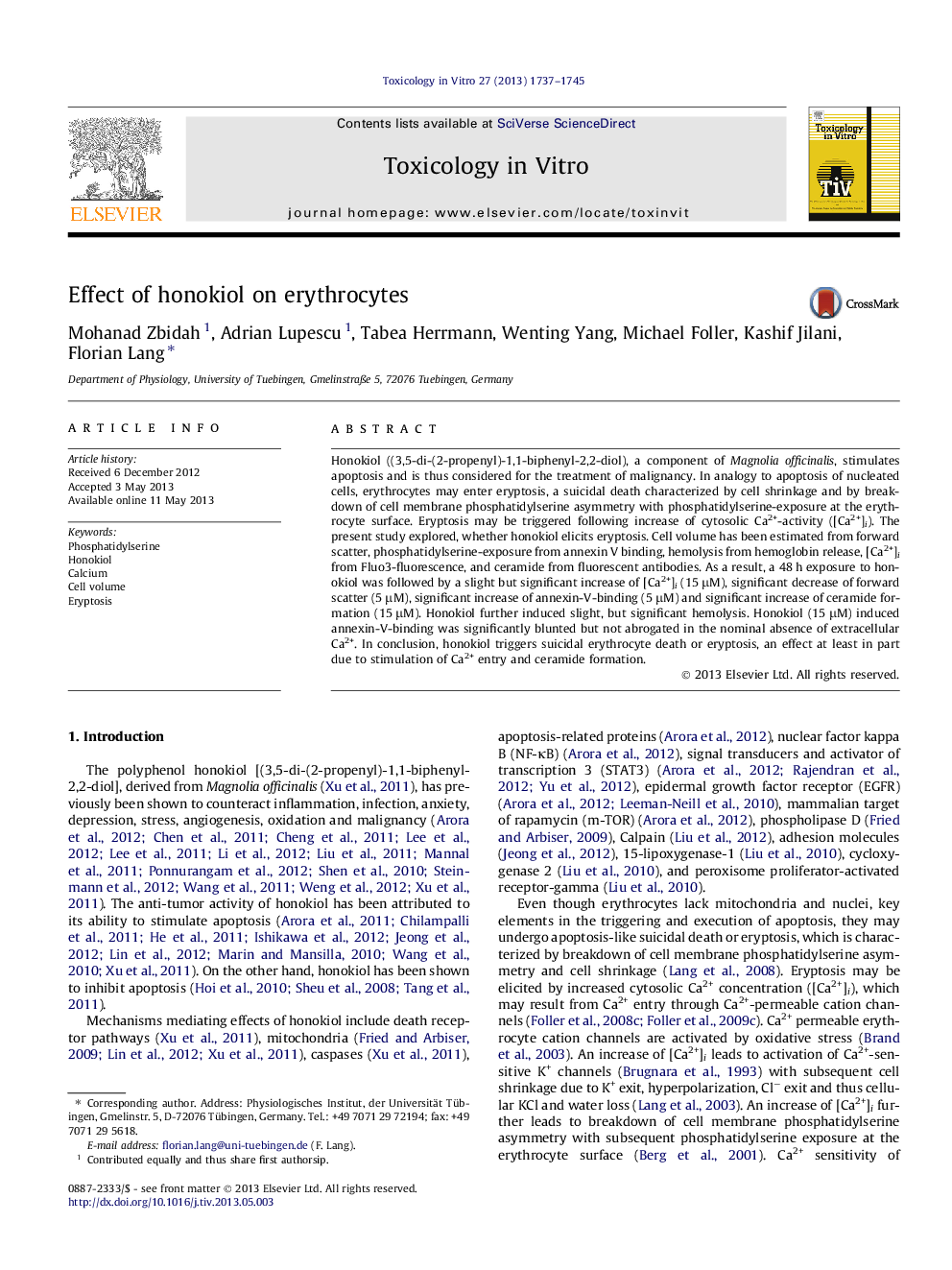| Article ID | Journal | Published Year | Pages | File Type |
|---|---|---|---|---|
| 5861733 | Toxicology in Vitro | 2013 | 9 Pages |
Abstract
Honokiol ((3,5-di-(2-propenyl)-1,1-biphenyl-2,2-diol), a component of Magnolia officinalis, stimulates apoptosis and is thus considered for the treatment of malignancy. In analogy to apoptosis of nucleated cells, erythrocytes may enter eryptosis, a suicidal death characterized by cell shrinkage and by breakdown of cell membrane phosphatidylserine asymmetry with phosphatidylserine-exposure at the erythrocyte surface. Eryptosis may be triggered following increase of cytosolic Ca2+-activity ([Ca2+]i). The present study explored, whether honokiol elicits eryptosis. Cell volume has been estimated from forward scatter, phosphatidylserine-exposure from annexin V binding, hemolysis from hemoglobin release, [Ca2+]i from Fluo3-fluorescence, and ceramide from fluorescent antibodies. As a result, a 48 h exposure to honokiol was followed by a slight but significant increase of [Ca2+]i (15 μM), significant decrease of forward scatter (5 μM), significant increase of annexin-V-binding (5 μM) and significant increase of ceramide formation (15 μM). Honokiol further induced slight, but significant hemolysis. Honokiol (15 μM) induced annexin-V-binding was significantly blunted but not abrogated in the nominal absence of extracellular Ca2+. In conclusion, honokiol triggers suicidal erythrocyte death or eryptosis, an effect at least in part due to stimulation of Ca2+ entry and ceramide formation.
Related Topics
Life Sciences
Environmental Science
Health, Toxicology and Mutagenesis
Authors
Mohanad Zbidah, Adrian Lupescu, Tabea Herrmann, Wenting Yang, Michael Foller, Kashif Jilani, Florian Lang,
